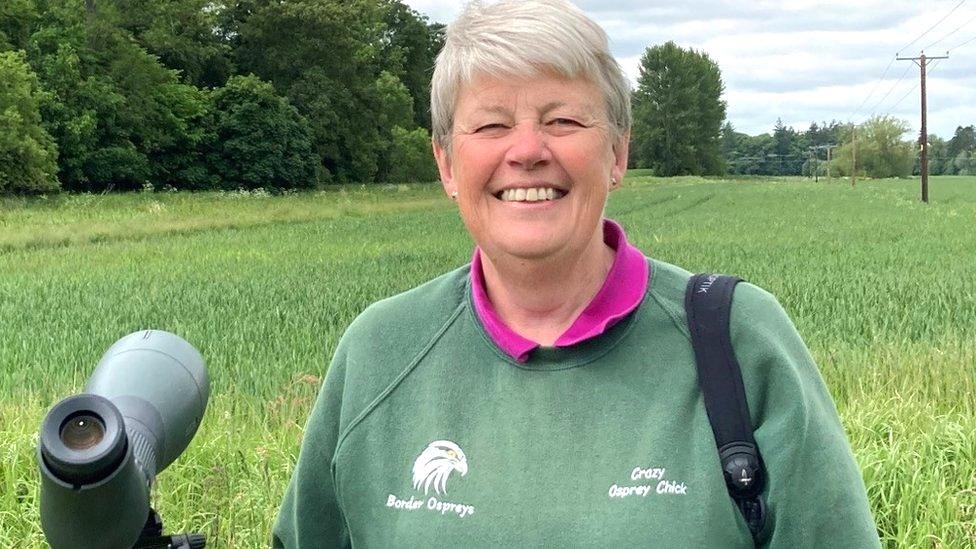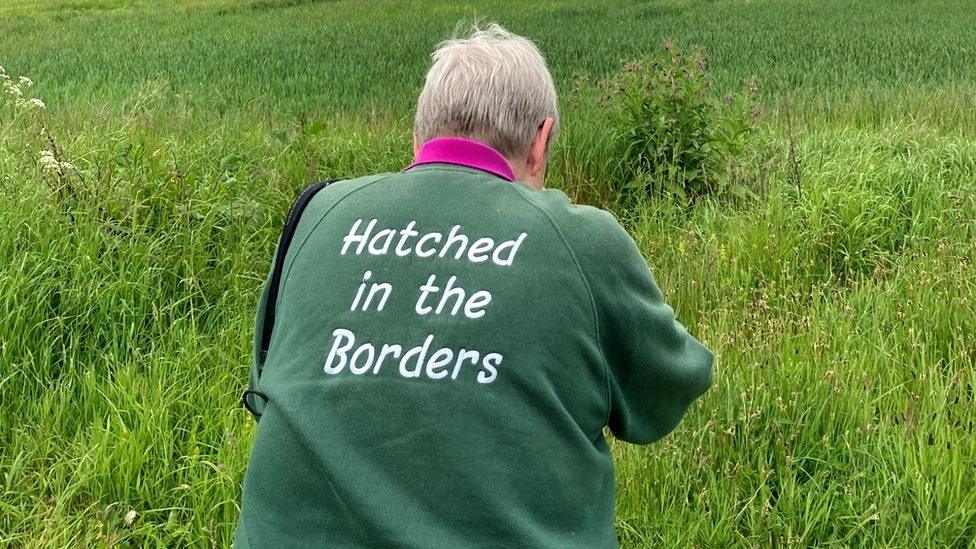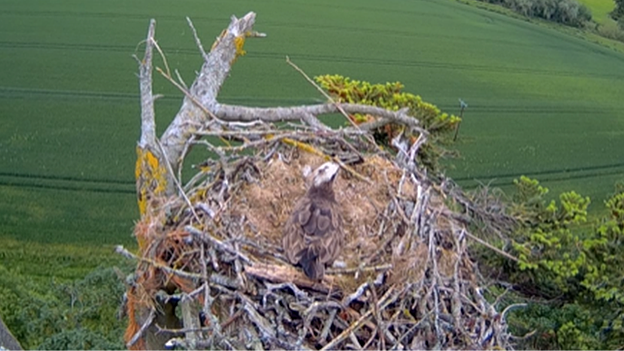Patience pays off as osprey chicks return to nest near Jedburgh
- Published

Rosie Shields has waited five years for chicks to hatch again at the nest in the Borders
A patient birdwatcher has seen her five-year wait rewarded with the return of osprey chicks to her very own nest.
Rosie Shields was devastated in the winter of 2015 when a breeding spot in the Borders was destroyed by storms.
She led efforts to create a man-made nest nearby which proved a success with a number of chicks hatching.
However, there had been none since the summer of 2017 but they have now returned and Ms Shields hopes this will help to boost bird numbers.
After storms destroyed a nest seven years ago, the former RAF officer convinced fellow bird lovers to create a new one in a nearby tree.
She also talked the owner of a visitor centre in the area into having live camera footage fed back to his café.

The nest was built after a previous one was destroyed by storms in 2015
Scottish Power became involved by making the area raptor friendly with perch poles erected beside the River Teviot and warning reflectors added to overhead power lines.
Ms Shields' nest-building, and the founding of her Border Ospreys group, was an immediate success with five chicks being raised over the next two summers.
Hundreds of bird lovers also came to the Born in Scotland visitor centre, near Jedburgh, to watch the young birds grow - via a large monitor - as both parents fished in the surrounding lochs and rivers.
The loss of the experienced female bird, Delilah, during the winter migration in 2017/2018 was to lead to four long summers of nest-watching without any more eggs or chicks.
Hopes were regularly raised and then dashed during those years.

Ms Shields said it had been "harrowing and disappointing" not to see birds hatch
"The ospreys took to our man-made nest straight away - it was built with a solid wooden frame and plastic mesh," said Ms Shields.
"It was terrific watching the two parents rear the chicks through the camera feed.
"But that ended in 2017 and it was to be another five years before we would see any eggs again."
She said that had proved difficult.
'Disappointing time'
"It has been a harrowing time and a disappointing time for me and everyone else involved in Border Ospreys," she added.
"We continued to watch the nest day after day - I have become an expert on osprey behaviour in empty nests."
During 2021 a new female, Juno, arrived in the nest and met the male bird, Samson.
Despite Juno showing territorial aggression against other females and happily accepting offers of fish, they failed to mate but things have since changed.
"Last year she wanted all the fish and chased off all the other females, but she didn't want to breed," said Ms Shields.
"It's a different story this year, and I'm now eating all the terrible words I said about her last year."

The chicks are the first to hatch in the nest since 2017
There were celebrations at the Born in Scotland centre on 24 April as the first egg in five years was laid in the nest.
A second, and then a third, followed during that same week.
Although an egg was lost before hatching started on 31 May, the other two chicks are now growing and feeding well on the pike and grayling regularly served up by Samson and Juno.
Ospreys became extinct in the UK just over a century ago.
They returned to breed in Scotland in the mid-1950s and numbers slowly began to increase. They have started to grow more rapidly in the past two decades.
This summer there will be about 300 osprey nests across Scotland, England and Wales where chicks are being successfully reared - including the one near Jedburgh.
"The re-introduction of ospreys has been a success story across the country, and I don't see any reason why this nest can't play its part in that continuing success story," Ms Shields said.